The Australian Dollar Tops G10 League Table after RBA Signals Pause in Rate Cutting Cycle
- Written by: James Skinner
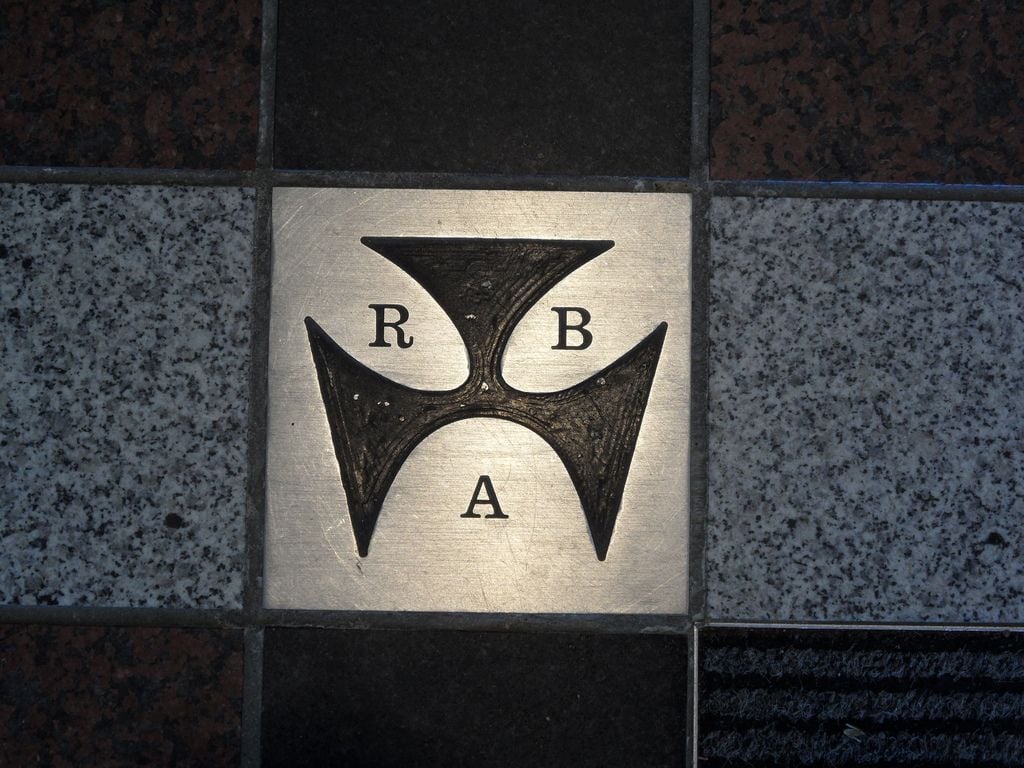
Image © ArchivesACT, Reproduced under CC Licensing, Editorial, Non-Commercial
- AUD tops G10 as RBA signals a pause in rate cutting cycle.
- Looks for "accumulation of evidence" before cutting third time.
- Analysts say next move may not come until October meeting.
- But AUD gains unlikely to last Vs USD, some analysts say.
- As Westpac looks for the AUD to gain over safe-have JPY.
The Australian Dollar topped the G10 league table Tuesday after the Reserve Bank of Australia (RBA) signalled that it'll wait for a while before making any potential decision to reduce its interest rate further from current levels, although multiple analysts have said the bank will have to cut again before long.
Australia's Dollar slipped into pole position following the release of minutes from the August 06 policy meeting, with the largest gains wracked up over a Brexit-battered Pound, which was under pressure again Tuesday after Prime Minister Boris Johnson doubled down with his insistence on changes to the EU withdrawal treaty agreed by his predecessor in a letter to European Council chief Donald Tusk. The letter came amid rising clamour among the opposition for a no confidence vote in the government.
Reserve Bank of Australia board members decided to leave the cash rate unchanged at 1% earlier this month due mainly to uncertainty over the impact that an earlier two cuts would have on the outlook for the economy and inflation, the newly released minutes show. There was also hope on the board that tax cuts announced earlier this year by the government will aid the economy, although some members were concerned those funds would simply end up in savings accounts given the deteriorating growth outlook.
"The RBA sent a clear signal today that there needs to be a reasonably strong case to cut further," says Elsa Lignos, head of FX strategy at RBC Capital Markets. "This suggests that it may need to see a couple of months of data to make such an assessment."
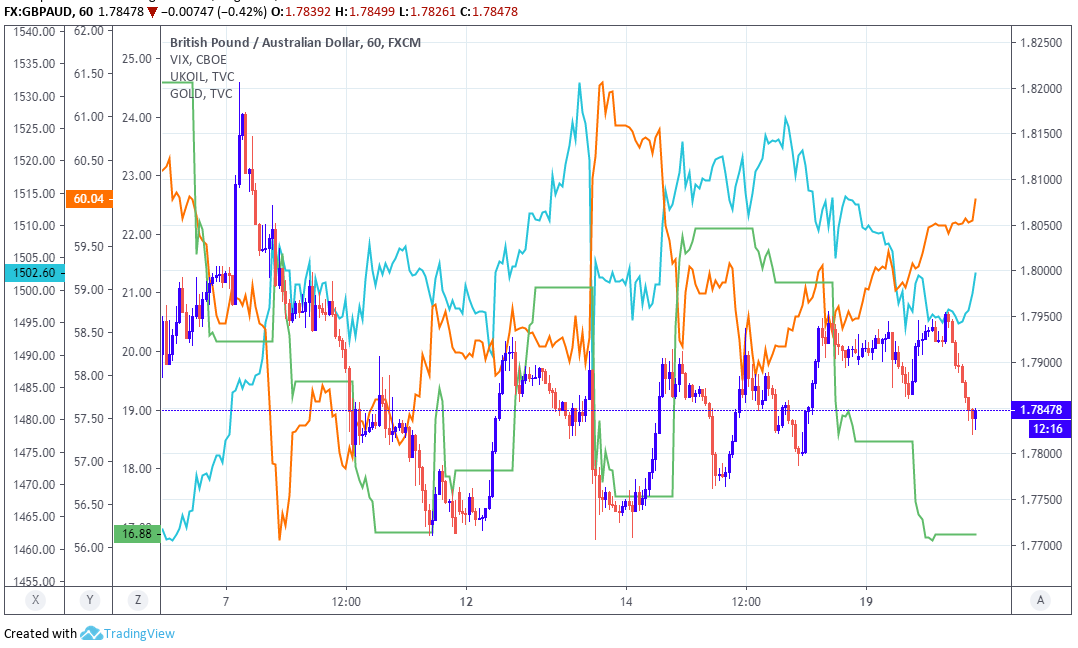
Above: GBP/AUD at hourly intervals, and gold price (blue), VIX 'fear index' (green) and oil (orange).
After cutting the cash rate from 1.5% earlier this year, policymakers agreed in August they'd like to see an “accumulation of additional evidence” that additional stimulus is necessary before acting again. Markets are now coalescing around the idea of a third 2019 cut coming in October.
The market implied RBA cash rate for December 03, the bank's last meeting of 2019, rose from 0.57% to 0.60% Tuesday as a result of the statement, although it remains a long way below the current 1% level and still indicates that markets are almost convinced another two cuts will be delivered later this year.
"We don’t think the domestic data since the August meeting meets the Board’s threshold of an “accumulation of additional evidence” says David Plank, head of Australian economics at ANZ. "This suggests a September rate cut is unlikely. We think October is in play, however, with some critical data due between the September and October board meetings such as Q2 GDP, business and consumer sentiment readings and labour market data."
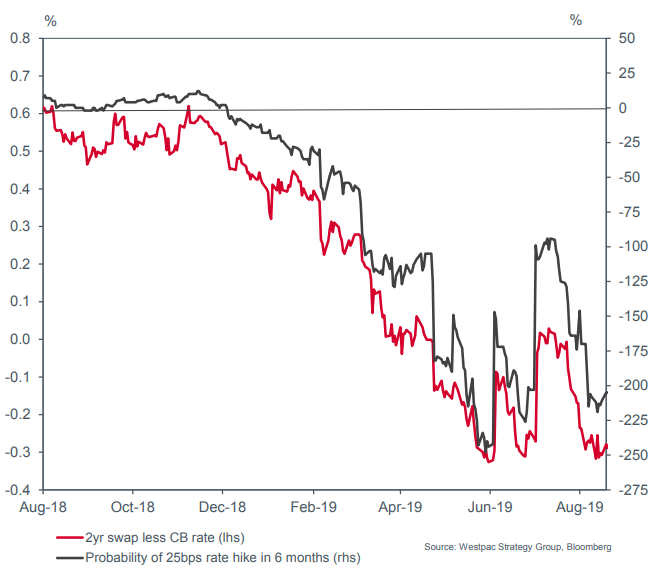
Above: Westpac graph showing market pricing for basis points of RBA rate cuts and probabilities.
RBA Governor Philip Lowe and the board resorted this year to cutting the cash rate in in the hope of seeing the consumer price index rise back above the lower boundary of the 2%-to-3% inflation target. Austrlian inflation has been below the target level for much of the last five years or more, although the RBA's task has recently been made more difficult by an ongoing slowdown in both the domestic and global economies, which is partly the result of the U.S.-China trade war.
Changes in rates are normally only made in response to movements in inflation, which is sensitive to GDP growth, but impact currencies because capital flows tend to move in the direction of the most advantageous or improving returns. Those flows tend to move in the direction of the most advantageous or improving returns, with a threat of lower rates normally seeing investors driven out of and deterred away from a currency.
"Barring a move above 0.6800, AUD could drift lower even though the strong 0.6730 support is unlikely to come under threat (minor support at 0.6740)," says Quek Ser Leang at United Overseas Bank, of the AUD/USD rate. "NY closing below 0.6730 would suggest that AUD is ready to tackle the 0.6678 low."
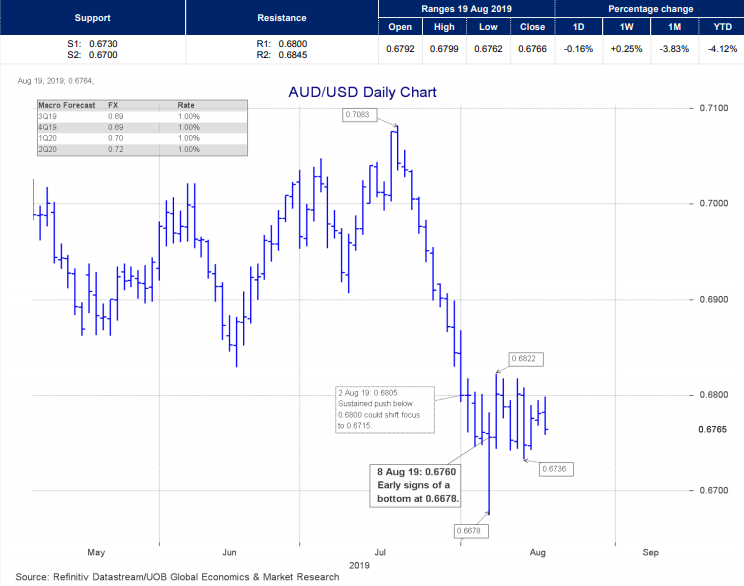
Above: United Overseas Bank graph showing analysis of AUD/USD rate.
RBA rate cuts, and speculation about them in the runup to the actual decisions, have hurt the Australian Dollar in the last 18 months because they've seen the yield on Aussie government bonds fall beneath that of comparable paper issued by the U.S. government, while reducing the premium traditionally offered by Aussie fixed income assets relative to other G10 peers.
However, the RBA is not the only developed world central bank to have either cut its interest rate, or that is still expected to cut rates up ahead, as the existing club is widely expected to grow larger in the months ahead as the Federal Reserve and European Central Bank stimulate their economies. Speculation in derivatives markets also suggests there's some chance the Bank of Canada and Bank of England could cut rates in the next six months too.
"The RBA’s gradual dovish turn then its delivery of rate cuts have obviously weighed on AUD crosses this year but near term, AUD/JPY might find some support as the RBA holds steady in Sep, holding its view that the Australian economy is at “a gentle turning point"," says Sean Callow at Westpac.
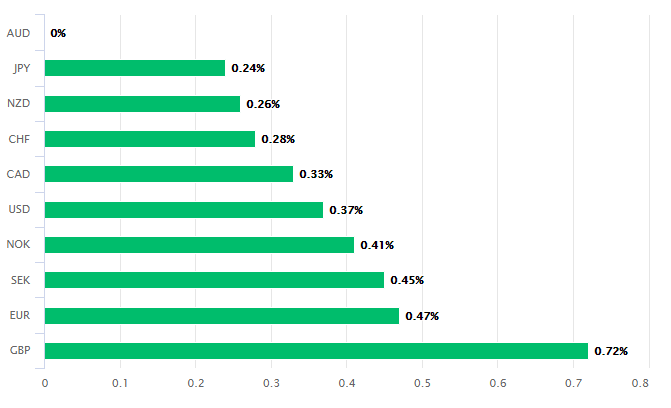
Above: Australian Dollar performance Vs G10 rivals. Source: Pound Sterling Live.
Time to move your money? Get 3-5% more currency than your bank would offer by using the services of foreign exchange specialists at RationalFX. A specialist broker can deliver you an exchange rate closer to the real market rate, thereby saving you substantial quantities of currency. Find out more here.
* Advertisement




